Born: May 7th, 1936
Died: May 18th, 2024
In his final public appearance after decades of business acclaim and vast wealth came to an abrupt halt with bankruptcy, Sir Anthony O’Reilly spoke about success and failure. “You win and you lose, and if you don’t know how to lose you don’t know how to live,” he told a Dublin audience.
These were salutary words. O’Reilly, who died aged 88 in Dublin, was very often a spectacular winner. A compelling raconteur with easy charm, he had a glittering career that often seemed epic in its scale. But by the end of it all, he was broke and bankrupt. It was a drastic fall.
Efforts to expel two Irish citizens symptom of a growing exhaustion in Germany
How is a school with €8,000 supposed to pay €10,000 worth of bills?
I’ve never thought of myself as a natural-born opinion columnist, I just say what I see
Turkish Trump Erdogan didn’t reckon with the power of a younger generation
“This was someone who was accustomed to success and being in a positive limelight. I think it would have been very tough and probably ultimately a humiliation,” said a company director who knew him well.
Before his credit ran out in 2015, Ireland’s first business superstar led an almost mythical life.
After making his name as an Ireland rugby international and a record-breaking try-scorer for the Lions, O’Reilly went on to become one of the most feted – and feared – corporate leaders of his time, with lucrative interests around the world. He had the power to crush business rivals and the position his newspapers took in elections was pivotal. He courted – and was courted by – political leaders.
With his striking good looks, quick wit and high energy, O’Reilly’s transition from the muddy sports fields of his youth in Dublin to the gilded corporate boardrooms of the United States appeared effortless.
His well-remunerated command of the Heinz ketchup and baked-beans empire in the US came alongside a simultaneous drive to bring the Independent newspaper group into international markets from Ireland. From his Pittsburgh base with Heinz, he spent years traversing the Atlantic every other weekend to look after multiple interests in Ireland. His Irish career spanned the terms of nine taoisigh, from Seán Lemass in the 1960s to Brian Cowen in the 2000s.

As a major media owner and influential business leader, O’Reilly wielded immense clout and kept company with the rich, the famous and the powerful. But his long and lucrative tenure at the helm of Independent News & Media (INM) ended on his 73rd birthday in 2009 when he was ousted after a disastrous corporate feud with Denis O’Brien.
His rival, the leading dealmaker of a younger generation, had beaten O’Reilly’s consortium in the 1995 race for State’s second mobile-phone licence. The licence made O’Brien his first fortune but the award was heavily criticised by the Moriarty tribunal. O’Brien has always rejected outright tribunal findings that he gave money to Michael Lowry, the minister who “secured the winning” of the 1995 mobile phone licence competition for O’Brien’s Esat Digifone.
O’Reilly was the winner when he and O’Brien clashed again in 2001 in the takeover battle for Eircom. O’Reilly’s €2.9 billion bid for the former national telephone monopoly was backed by Goldman Sachs bank and George Soros, the billionaire financier. The government changed the law to smooth the O’Reilly deal, amending tax rules in favour of the union-backed worker share ownership trust in Eircom which stood to increase its stake under his proposal. The tax move, sought by the trust, came as then minister for finance Charlie McCreevy was advised O’Reilly’s bid was “virtually certain to fall” if such changes were not made.
The fight for INM started in 2006 when O’Brien, a critic of the news group’s coverage of his affairs, took a small shareholding. Tension soon erupted into full-blown corporate warfare as O’Brien raised his stake repeatedly, with barbed insults traded on both sides. INM branded O’Brien a “dissident” investor and he attacked O’Reilly’s rule, besieging him with pointed questions about governance and strategy. “It was a battle and viewed as such,” said one INM insider.
In the end the dissident won the fight for INM, eventually installing his own people at the top of the business. Still, O’Reilly’s immediate successor as chief executive was his son, Gavin. He too clashed with O’Brien and left. For O’Brien, the dominance he gained over INM was a Pyrrhic victory. Just like O’Reilly, he lost hundreds of millions of euro as the company’s shares collapsed under the weight of heavy corporate debts and recession after the banking crash. INM is now owned by Mediahuis, a group based in Belgium.
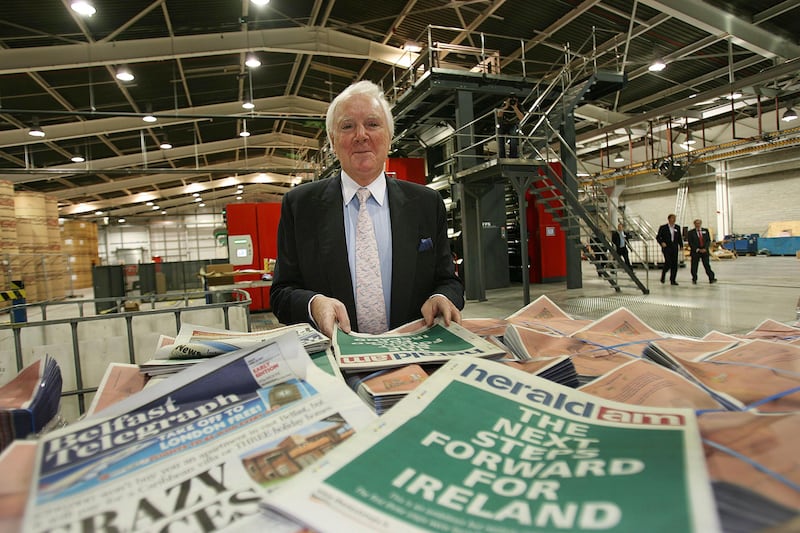
These crushing blows to O’Reilly, came at a time when he might otherwise have been enjoying retirement from the hectic demands of corporate life. Not only did the tumbling shares eviscerate much of his personal wealth, the cancellation of annual INM dividends – dependable income that yielded him more than €31 million in 2007 alone – quashed his ability to sustain towering personal debts that still encumbered him when he was in his eighth decade.
O’Reilly – and investors who backed him – had known expensive failures before. Shareholders in his 1980s energy exploration company Atlantic Resources lost out badly in fruitless drilling off the Irish coast that yielded nothing but a “puddle of oil”. Still, there had been little to call into question his wealth in a fundamental way.
Although many Irish business figures made big money in the Celtic Tiger years, he had been amassing his fortune since the days when the stunted Irish economy was still a byword for stagnation. BusinessWeek magazine in the US, a critic of Heinz corporate governance under O’Reilly, reported his total compensation over six years in the 1990s was just shy of $183 million.
For many years he had the reputation of being Ireland’s richest man, the country’s first billionaire – and spent money accordingly.
O’Reilly kept three Irish homes – a Georgian mansion in Fitzwilliam Square, Dublin; a 750-acre country estate at Castlemartin in Co Kildare; and a Co Cork holiday retreat at Glandore – as well as a Bahamas beachfront hideaway, a chateau in Deauville, France, and a plush Tudor residence in the Pittsburgh suburbs. He had an art collection to match, spending more than $24 million on a painting by Claude Monet, the French impressionist, and he owned valuable work by Picasso, Sir William Orpen, Roderic O’Conor, Louis le Brocquy and Jack B Yeats.
The seeds of O’Reilly’s financial implosion were varied. But the demise of Waterford Wedgwood was crippling, sapping huge volumes of money before it went into receivership in the early days of 2009. O’Reilly and his brother-in-law Peter Goulandris ploughed hundreds of millions of euro into the doomed luxury goods group, a catastrophic bet on cut glass and bone china that left him in peril as INM woes intensified.
[ Tony O’Reilly: ‘You need to know how to lose to know how to live’Opens in new window ]
When the end finally came, it was brutal. O’Reilly was in the red by almost €150 million when he was declared bankrupt in the Bahamas in 2015, an event precipitated by the State-owned Allied Irish Banks securing a €22.6 million debt judgment against him personally.
Prized assets long-held were sold off to meet the demands of creditors. US telecoms billionaire John Malone bought Castlemartin, the estate O’Reilly described as his “spiritual home”. He had buried his parents there in a private graveyard by a medieval church he rebuilt.
For a very public man who thrived in the glow of his many achievements, this was a very public downfall. He exited bankruptcy in December 2023.
“As a man who had done Ireland some good it was probably a tough demise,” said an associate.
All of this would have seemed unthinkable when O’Reilly was at the height of his powers.
He was the recipient of videotaped 50th birthday greetings from US president Ronald Reagan and played tennis at the White House with Reagan’s successor, George Bush snr.
He had an international advisory board at INM whose members included former Washington Post editor Ben Bradlee of Watergate fame, James Bond actor Seán Connery, former Tory chancellor Ken Clarke and former Canadian prime minister Brian Mulroney. Guests to his homes included South African leader Nelson Mandela, former US president Bill Clinton and senator Ted Kennedy.
He parlayed his international influence as a founder in 1976 of the philanthropic Ireland Fund of the US, forerunner of the Ireland Funds, which raised more $600 million in the cause of peace and reconciliation in Ireland, North and South. As successive Irish governments worked during the Troubles to forge support in Washington for constitutional nationalism, the Ireland Funds helped to undermine IRA fundraising in the US.
O’Reilly was knighted in 2001 by Britain’s Queen Elizabeth for “long and distinguished service” to Northern Ireland, recognition for his Ireland Funds work. The award was the first full knighthood awarded to an Irish citizen. Government permission had to be sought before it was accepted. He preferred to be known thereafter as Sir Anthony.
Anthony John Francis O’Reilly was born on May 7th, 1936, in Dublin to Aileen O’Connor and Jack O’Reilly, a customs official who was a separated father of four children. He grew up in Griffith Avenue, Dublin, and was educated by the Jesuits at Belvedere College.
O’Reilly was in his teens before he learned of his half-siblings’ existence, from priests at school. Illegitimacy carried a heavy social stigma then and the constitutional ban on divorce still stood. Many years passed before he told his parents he knew their secret. They married in 1974 following the death of his father’s wife.
A popular though unexceptional pupil, he was a natural all-round athlete who ultimately concentrated on rugby. Leaving Belvedere, he was apprenticed to a solicitor and studied law at University College Dublin.
Rugby was O’Reilly’s priority and he had an outstanding first season at senior level. It began with Old Belvedere’s third 15 – and ended with selection for the Lions’ 1955 tour of South Africa. In between, he played in all of Ireland’s international matches.
O’Reilly quickly made his mark at the highest level of the sport, scoring a try in his first Lions test match and becoming the top scorer of the tour. He excelled again when the Lions toured Australia and New Zealand in 1959. He held the Lions record for scoring the most tries – 37. He won 29 Irish caps, his final international match in 1970 coming after a seven-year gap. Tracked down in Annabel’s nightclub in London by team selectors, he arrived for training the next day in a chauffeur-driven Bentley.
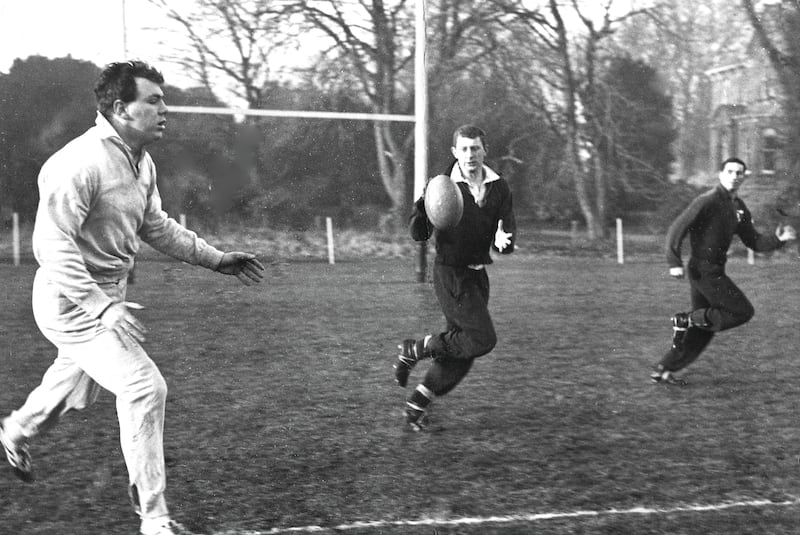
O’Reilly qualified as a solicitor in 1958 but never practised law. Instead, he trained as a management consultant in Leicester, moving to Cork two years later as assistant chairman of a general builder’s merchant, trading also in fertiliser, seed and oil.
Known from early days as the “Golden Boy”, he was the youngest head of a State-sponsored body. That was in the distant days of the Lemass era, when Ireland started to shake off the shackles of protectionism that had held it back for decades.
As the insular domestic economy gradually opened, O’Reilly was one of a new breed of businessman who saw extensive opportunities in new order. Alongside Ryanair founder Tony Ryan and packaging magnate Michael Smurfit, he was one of three figures born in 1936 who had a transformative impact on Irish commerce. O’Reilly came to see global business as his milieu, building an international career long before Ireland’s fast growth in the Internet age as one of the world’s most globalised economies.
Thanks to his sporting exploits, he had a celebrity status. His first wedding in 1962 – to Susan Cameron, Australian daughter of a wealthy mining executive, with whom he had six children – was described by the Evening Mail as being “like something from a film production”.
“One thing that stood out was his ability to relate at a personal level,” said an associate. “Notwithstanding meeting who’s who – and what’s what – he genuinely seemed to interested in you personally.”
In 1962 he had been appointed general manager of Bord Báinne, the Irish Dairy Board. He did much to modernise the dairy industry and derived immense personal satisfaction from the successful launch of the Kerrygold butter brand in Britain, a brand that prospers to this day. The marketing of Kerrygold was the subject of his PhD, awarded in 1980 by Bradford University.
O’Reilly took charge of the Irish Sugar Company in 1966, at the suggestion of the then taoiseach Jack Lynch. His immediate task was to reverse the heavy losses at the company’s subsidiary, Erin Foods. He negotiated a merger with Heinz UK but Heinz-Erin did not prosper. He left in 1969 to become managing director of Heinz in Britain. In 1971 he became a senior vice-president of Heinz, and by 1979 he was chief executive.
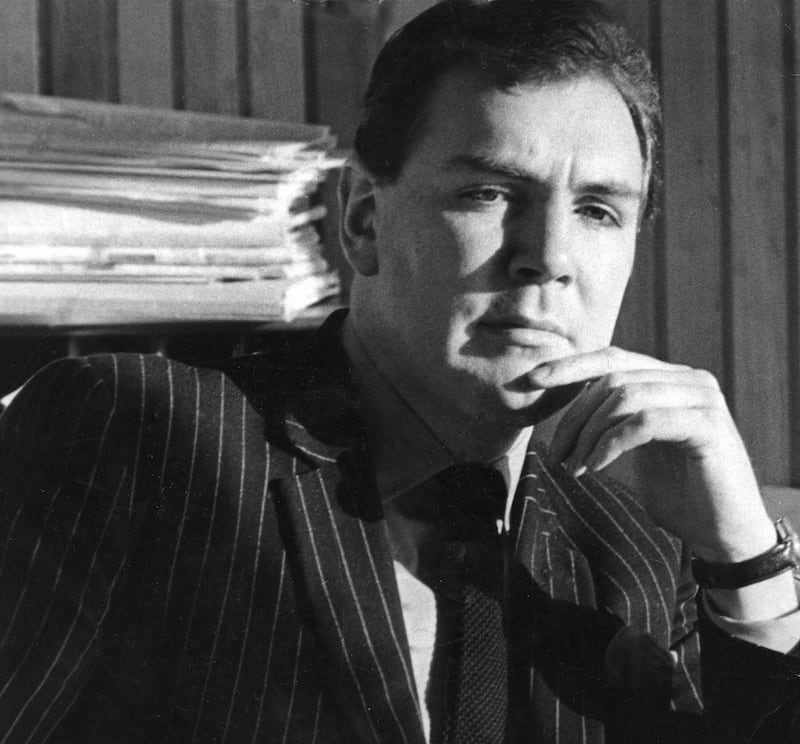
O’Reilly was not without critics during his long stewardship of Heinz but transformed the business, valued at $900 million when he took charge, into a $23 billion behemoth by the time he retired as chairman in 2000. He was appointed chairman in 1987, the first outside the Heinz family, and retained the position of chief executive until 1998.
Still, the 1980s were considered his heyday in Heinz. In the next decade, he faced cutting questions over his remuneration and the way he ran the business. Forbes magazine declared him the fourth-highest paid chief in the US but said his “ego and paycheck are bigger than his accomplishments”.
BusinessWeek ran a biting cover piece reporting investors heavily critical of a board stuffed with ageing cronies of the chief executive, charges similar to those levelled against the INM and Waterford boards in Ireland. The magazine highlighted ritzy corporate entertainment for a Heinz-sponsored horse race in Leopardstown, all at a time when the company was eliminating 2,500 jobs.
Although O’Reilly was richly rewarded for his loyalty to Heinz, its staple products were not really to his taste. Of the company’s famous ketchup, he once said: “We have been producing it, like chunk, chunk, chunk, every day in 100 factories around the world.” Newspapers, by contrast, were different and exciting, providing “more than you can get out of baked beans”.
With Heinz’s agreement, he maintained deep involvement in Irish business.
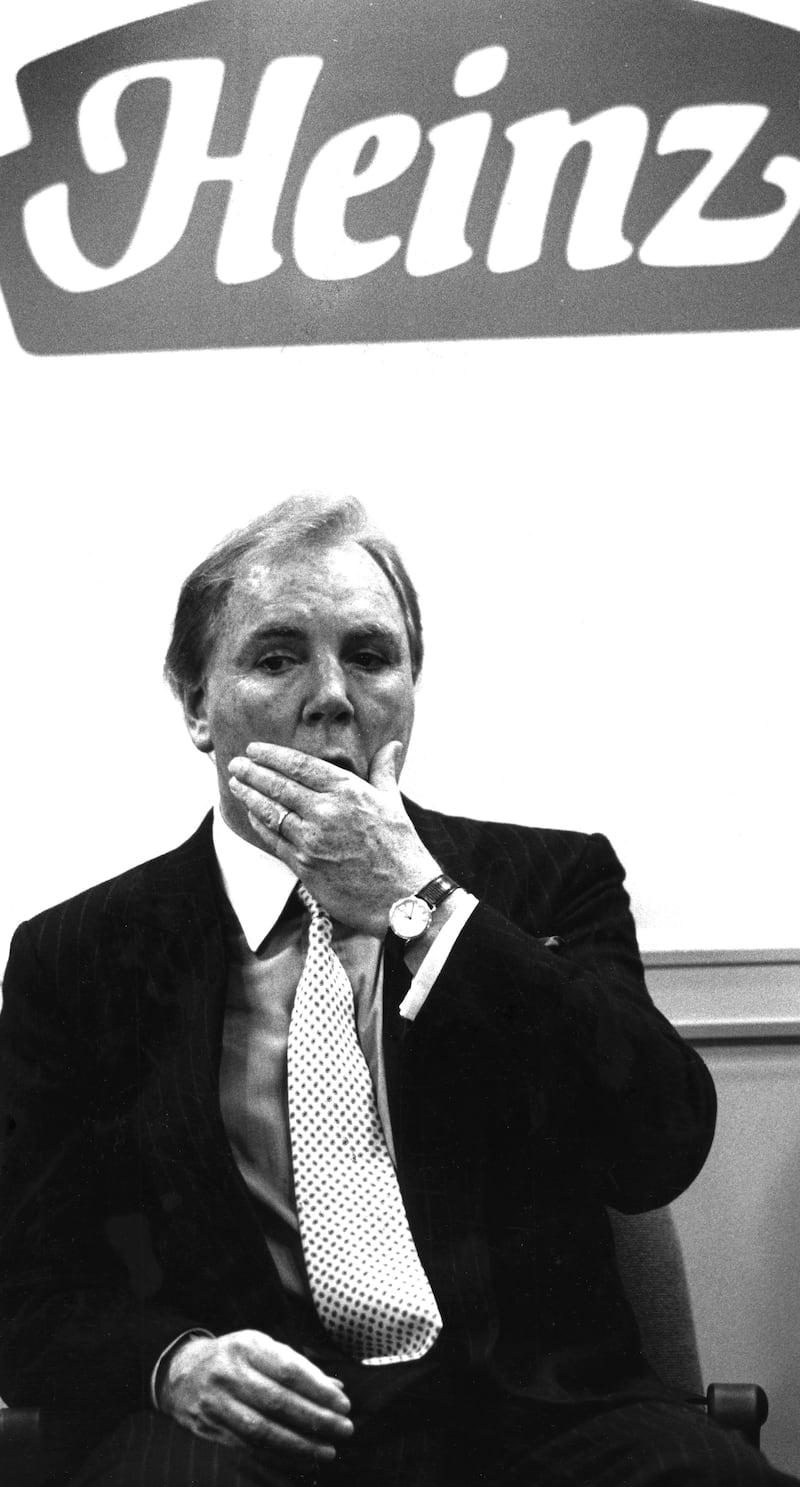
Still in his 30s, he was the prime mover behind the Fitzwilton conglomerate, once Ireland’s third-largest company with 4,400 workers. But Fitzwilton encountered difficulty. In 1975, banks moved to protect their interests. Within two years he had restored Fitzwilton to solvency. However, the episode tarnished his image and he felt aggrieved that banks publicly questioned his judgment.
Many years later, O’Reilly viewed Fitzwilton’s acquisition in 1990 of the storied Waterford Wedgwood as something of a personal triumph. It proved to be a fateful move, draining more and more cash as his vision of creating an Irish luxury giant for the 21st century faded in the face of large trading losses and insurmountable debts.
After his 1990 divorce from Susan O’Reilly, this was the period of his second marriage to Chryss Goulandris, heiress to a huge Greek shipping fortune and the owner of big bloodstock interests. She grew up in New York, where her family had a mansion on Park Avenue. They married in the Bahamas in 1991. O’Reilly later gifted to his second wife the diamond engagement ring that Aristotle Onassis gave Jacqueline Kennedy, bidding $2.59 million to buy it in a Sotheby’s auction. After his knighthood, Chryss became Lady O’Reilly.
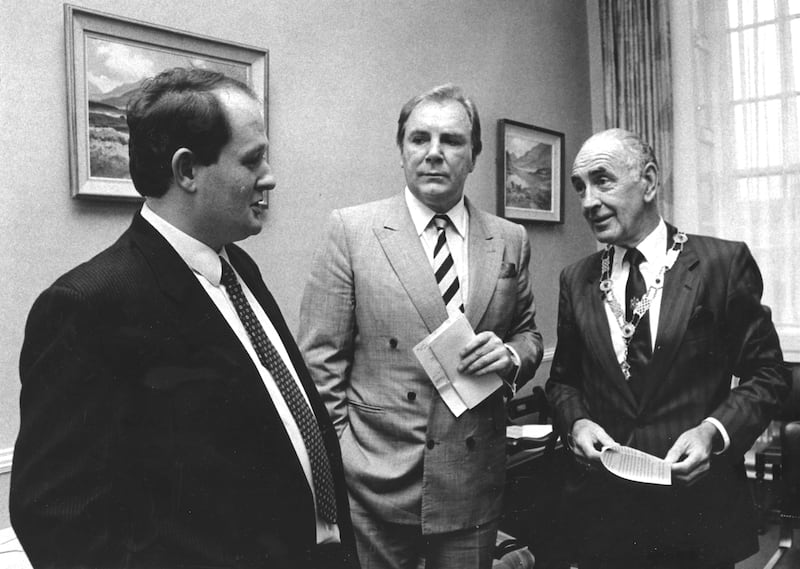
For as long as the good times rolled at INM – and they endured for many years – the news business was the most rewarding of his investments.
He was only 36 in 1973 when he gained control over the publisher of the Irish Independent, the Sunday Independent and the Evening Herald, borrowing a little more than £1 million to buy into a business run for generations by the scions of William Martin Murphy, the businessman infamous for his role in the 1913 Lockout.
Modernising what had become staid titles, O’Reilly consolidated his position with the purchase of the tabloid Sunday World and many of the strongest provincial weeklies. Later he took a key share in the Sunday Tribune, a contentious move he cast as a defensive measure against the advance of Rupert Murdoch’s Sunday Times. A perennial loss-maker, the Tribune closed in 2011.
More controversial but shorter-lived was a stake O’Reilly took in the Irish Press publisher, Independent’s historic arch-rival, months before its 1995 collapse. The Competition Authority said Independent’s investment in the group established by Éamon de Valera was an abuse of its dominant market position.
Independent also jointly published the Irish edition of the tabloid Star and, later, acquired the Belfast Telegraph.
A lover of newspapers, O’Reilly had the reputation of being a benign proprietor, but he faced criticism for underinvestment in editorial resources. Irish profits fanned international expansion as the business embraced titles in Australia, New Zealand, South Africa, India and Britain, where O’Reilly cast his loss-making London Independent titles as a “calling card” in the city. “Three newspapers became 128,” wrote Ivan Fallon, O’Reilly’s official biographer.
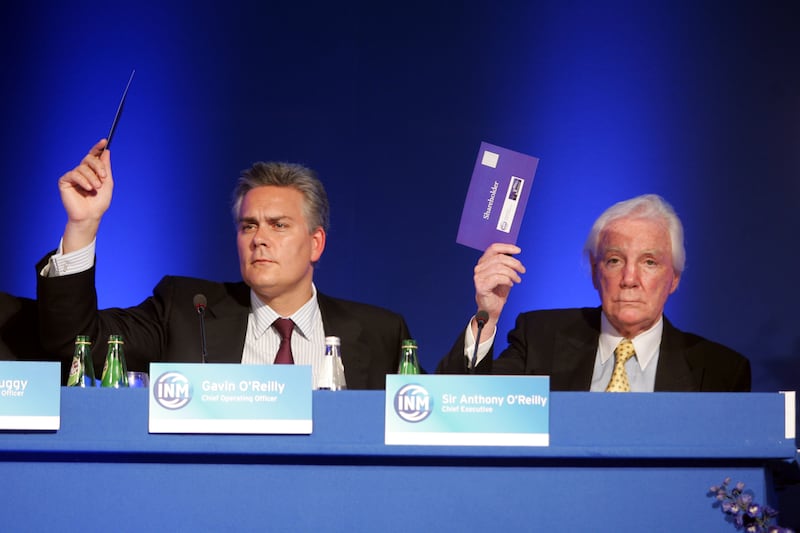
Still, the international stable did not survive bitter hostilities with O’Brien and debt strains on INM that intensified in that period. The London Independent titles were sold for a nominal sum of £1 to Alexander Lebedev, a Russian billionaire who was previously a KGB agent.
Media ownership gave O’Reilly proximity to power, which he relished. “Since I own 35 per cent of the newspapers in Ireland I have close contact with the politicians,” he told Forbes in the 1980s.
As time went on, his share of the market increased and so too did his access to international leaders.
One New York Times report in 1988 noted “self promotion” on a grand scale in the Sunday Independent when it ran an eight-page colour supplement on O’Reilly, with 17 pictures of the subject: “Mr O’Reilly with Henry Kissinger. Mr O’Reilly with Britain’s prime minister Margaret Thatcher. Mr O’Reilly with the former French president, Valéry Giscard d’Estaing. Mr O’Reilly with Robert Mugabe, president of Zimbabwe. Mr O’Reilly stepping off the corporate jet.”
The voluble Sunday Independent, always the standout title in the O’Reilly empire, was noted for its sustained hostility to the Northern Ireland peace process as efforts gathered pace in the 1990s to halt the cycle of violence.
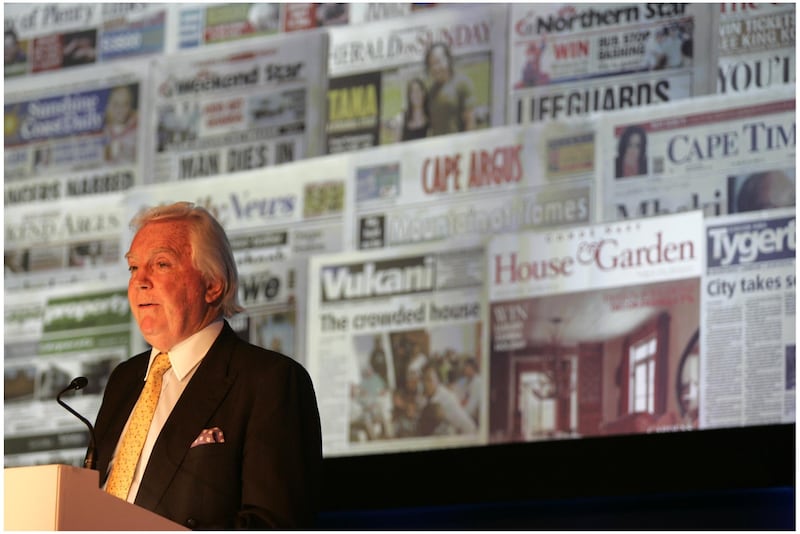
Notable too was the partisanship of the notorious “Payback Time” front-page editorial in the Irish Independent on the eve of the 1997 general election. Backing Fianna Fáil, the editorial savaged the outgoing Fine Gael-led rainbow coalition.
The administration led by taoiseach John Bruton had fallen out of favour with O’Reilly over its policy on television transmission systems in which Independent had an interest with US partners.
Bruton had visited the businessman in his Glandore home one Sunday morning in the summer of 1996, hearing direct complaints about his government’s failure to confront unlicensed TV operators who were damaging the licensed business backed by O’Reilly. The issue, explored later in the Moriarty tribunal, was highly political because the government feared action against unlicensed providers could cost it seats in the election to come.
At another meeting, with INM executives in their office, Bruton’s adviser Seán Donlon was left “in no doubt” about the group’s “hostility” to government parties if issues were not resolved “to their satisfaction”. An INM memo of the same meeting noted the government would lose the company “as friends”.
Bruton told the tribunal he would have taken the reference to the loss of INM “as friends” to mean hostile coverage of the government parties in the newspapers, and not a threat of litigation. This was the opposite of O’Reilly’s account. The potential loss of INM “as friends” referred to prospective litigation over the TV issue and not at all an editorial matter, O’Reilly told the tribunal.
O’Reilly agreed the editorial was unusual but insisted he had no input in it “nor did I know that it was going on the front page”. Irish Independent editor Vinnie Doyle was quoted in his own paper saying the editorial was not the result of an O’Reilly directive.
Fianna Fáil won enough seats in 1997 to form a coalition government with the Progressive Democrats. Soon afterwards, minister for foreign affairs Ray Burke resigned from the Dáil in the wake of revelations he accepted £30,000 from a businessman prior to the 1989 election.
Burke was later revealed to have received a similar sum that year from Rennicks Ltd, a subsidiary of O’Reilly’s Fitzwilton. As minister in charge of communications, he allocated seven television transmission licences to Independent and its international partners.
A 2005 decision of the Mahon planning tribunal to hold public hearings on the Rennicks payment to Burke prompted legal action by Fitzwilton, which led to the Supreme Court blocking such hearings. When that ruling was handed down, Fitzwilton’s lawyers said O’Reilly did not know the payment, intended for Fianna Fáil, was made “via Mr Burke” until 10 years later.
In earlier times O’Reilly resisted approaches from both Fianna Fáil and Fine Gael to pursue a political career in Ireland.
Similarly, he remained on the sidelines of US politics, but the extent of his media interests ensured that political leaders paid close attention to what he had to say. “Everyone owns a piece of politicians and that’s what I object to,” he once said. “Business is autocratic. It is not democratic.”
Winston Churchill was a hero and inspiration. Britain’s wartime leader was, O’Reilly told the BBC, a selfish and conceited man who was very conscious of his importance. “I suppose that is one of the principal criteria of success – to believe in yourself so strongly that you are the epicentre of all that is happening.”
Lady O’Reilly died in August 2023 aged 73.
Sons Cameron, Gavin and Tony jnr and daughters Susie, Justine and Caroline survive him. Their mother Susan O’Reilly died in 2014.













